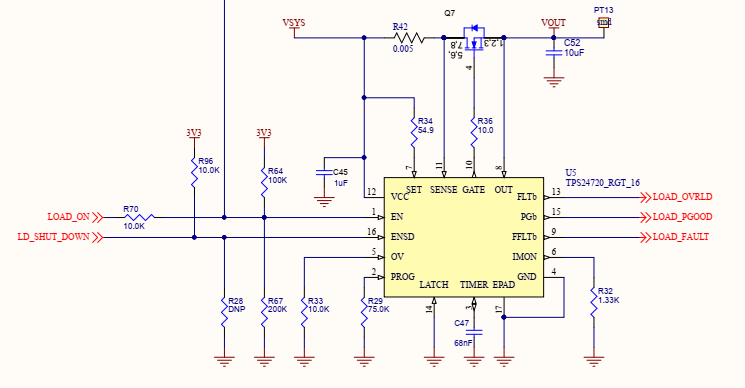Other Parts Discussed in Thread: CSD17578Q3A
Schematic diagram of the relevant part:
VSYS is 12V nominal.
When I connect a resistive load (4 Ohms), the overload protection is kicking in:
The switch retries after a few hundreds of ms and the pattern repeats. If I disconnect the resistance and enable the switch and connect the resistance back after VOUT settles, it works.
Per my calculations, the current limit is 5A and the fault timer is 10ms.
With an electronic load set to the same resistance, I get
What am I missing?






